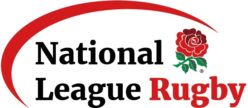National One hit back at EAPs ruling
Clubs in National One have come to a compromise regarding the number of England Academy Players they can select in their matchday squads. Photo Credit: Nick Meredith
Last week, The Rugby Paper reported the number of England Academy Players (EAPs) teams could use had been reduced from 10 to eight for the upcoming 2018/19 campaign with the decision heavily influenced by the Premiership and RFU.
The announcement angered the majority of National One clubs (who had recently voted 13-3 in favour of cutting the number of EAPs down from 10 to four) because of the amount of control the Premiership had over the decision, but The Rugby Paper have now reported that the clubs have come to a “gentlemen’s agreement” regarding the number of EAPs teams can play.
"I think it would destroy National One club rugby if it stays as it is."
We spoke with @ElthamiansRFC's Director of Rugby @gavinl40 about the dual-registration debate in National One #Nat1 pic.twitter.com/QttCxgALt6
— NCA Rugby (@nca_rugby) July 3, 2018
The ruling of eight EAPs and three loan players remains the same, but the National One clubs have agreed to field just six EAPs and three loan players.
However, if clubs do decide to select the limit of eight EAPs in their matchday squad, they will not be breaking the RFU regulations.
Chairman of the NCA Norman Robertson said: “The 16 clubs have come to a gentlemen’s agreement, however all clubs have been reminded that RFU regulations take precedent over any agreement that we have amongst ourselves.
“Of course, we are not happy that we have been unable to come to an agreement with the Premiership and we will discuss the way forward at our regional NCA meetings.
“What is key is that we do not want to stop EAPs from getting regular rugby that we can offer them in National One, but our view is that we want to protect the clubs by agreeing on a set number of EAPs who will feature for a particular team throughout the season rather than the uncertainty we have now where players are in one week and out the next, which is unfair to both the EAP and the player that they replace.
“Last season 43% of players who played in the “A” league were not from Premiership clubs, many of those coming from National league clubs. “
Blackheath’s Head Coach James Shanahan commented: “I think it’s great that the NCA are trying to stand up to Premiership Rugby and RFU and the use of EAP’s.
“I think EAPs playing in the National Leagues is great for their development. Learning to play league rugby that has cause and consequences is perfect them, but clubs need their own identity and to have 10 EAPs plus three loan players potentially in match day 20 is ridiculous.
“For Premiership rugby and RFU to dictate is frustrating considering the A League only functions due to over 40%
of players involved being for NCA clubs! Currently, it’s a one-way process.”
Another example of Nat 1 clubs happy to sign ex professionals and in some cases internationals on their way out yet snub opportunities for young players to develop. These lads need to play somewhere and by refusing to play them you affect the long term future of English quality.
— Ollie Adams (@OllieAdams1) July 3, 2018
Some tier three teams felt they were at a disadvantage last term as other clubs used the EAPs system to enhance their squads and one of those sides were Loughborough Students.
The Midlands club used their links with Leicester Tigers to help improve the depth of their squad, but recent graduate Ollie Adams feels that young players should be able to gain as much experience as possible in National One in order to develop if they are not getting sufficient game time at their Premiership club.
He tweeted: “These lads need to play somewhere and by refusing to play them you affect the long-term future of English quality.”
Cinderford are one of the latest clubs to bring in an influx of dual-registered players ahead of the new season. Their relationship with Gloucester has seen Paul Morris’ side bringing in seven young players from Kingsholm.
Speaking to Gloucestershire Live, Morris, who guided Cinderford to the National Two South title last year, said: “I like the look of them and they’re coming to Cinderford at the right time.
“They face a battle to get into the Cinderford first team but if they do, they’ll be better players because of it and they will be playing well to get into our side. I’m happy to have them. We support Gloucester Rugby and vice-versa.
“We’ve got a good relationship with Richard Whiffin (Gloucester head of academy) and Kevin Mannion (Gloucester academy performance manager).
“I’ve got a lot of respect for both of them and I’m happy where we fit in on that pathway.”

